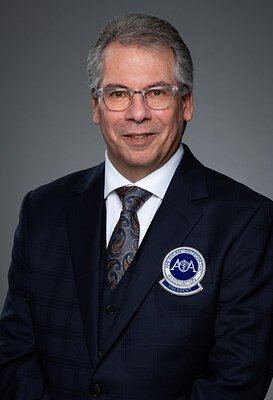
Beyond the MD: Osteopathic Physicians Surge, Filling Gaps in US Healthcare
As physician shortages deepen, osteopathic doctors (DOs) are rapidly expanding their ranks & focusing on holistic, patient-centered care – particularly in underserved communities. A look at the growing influence of DOs.
Beyond the MD: Osteopathic Physicians Surge, Filling Gaps in US Healthcare
Chicago, IL – November 15, 2025 – The American Osteopathic Association (AOA) recently announced a historic milestone: the osteopathic medical profession now comprises over 200,000 physicians and medical students. This growth isn't simply a numerical increase; it signals a fundamental shift in the US healthcare landscape, with osteopathic doctors (DOs) increasingly positioned to address critical gaps in access to care, particularly in underserved communities. While all physicians are vital, DOs are differentiating themselves through a holistic, patient-centered approach that resonates with a growing segment of the population and meets pressing healthcare needs.
For over 150 years, osteopathic medicine has emphasized a ‘whole-person’ approach to care, considering the interconnectedness of the body’s systems and the influence of lifestyle and environment on health. This philosophy, combined with training in all areas of medicine, distinguishes DOs from their allopathic (MD) counterparts. This unique training is driving an increase in their numbers, with the profession experiencing a faster growth rate than conventional medicine over the past decade.
A Growing Force in Medical Education & Practice
Currently, DOs represent over 25% of all medical students in the US, a significant increase from previous years. Approximately 6,000 DOs graduate annually from 44 accredited osteopathic medical colleges across 71 campuses. This expansion isn't just about quantity; it's about diversifying the physician workforce. Nearly 70% of actively practicing DOs are under the age of 45, indicating a younger and more agile professional base.
“The growth of osteopathic medicine reflects a demand for physicians who prioritize the patient as a whole, not just a collection of symptoms,” explains a healthcare policy expert who requested anonymity. “Patients are increasingly seeking a more collaborative and preventative approach, and DOs are well-equipped to deliver that.”
However, this growth isn’t without its challenges. Competition for residency positions remains fierce, and ensuring adequate collaboration between DOs and MDs is crucial. While the lines have blurred over time, historical perceptions can still present obstacles. “There’s a growing recognition of the value of osteopathic training,” says a medical educator, “but continued efforts are needed to promote integration and ensure equal opportunities.”
Addressing Healthcare Disparities: A Focus on Primary Care & Rural Communities
The holistic approach of osteopathic medicine particularly lends itself to primary care, and DOs are disproportionately represented in this critical area. This commitment extends to rural and underserved communities, where physician shortages are often most acute. Research indicates that DOs are more likely to practice in Health Professional Shortage Areas (HPSAs) than their MD counterparts.
“DOs have a long-standing commitment to serving underserved populations,” states a rural health advocate. “Their training emphasizes a broader understanding of social determinants of health and the importance of community-based care.”
This commitment is demonstrably impacting access to care in these communities. DOs are often the primary providers in areas where access to specialized care is limited, offering a wide range of services, from preventative care to chronic disease management.
A Strong Presence in Military Healthcare
The commitment to service extends beyond civilian healthcare, with DOs playing an increasingly significant role in the military. Currently, approximately 38% of military physicians are DOs, demonstrating their adaptability and skill in diverse and challenging environments.
“DOs bring a unique skillset to the military, particularly in trauma care and primary care settings,” states a military medical professional. “Their holistic approach and emphasis on musculoskeletal health are valuable assets in this field.”
Looking Ahead: The Future of Osteopathic Medicine
The growth of osteopathic medicine isn’t just a trend; it’s a response to evolving healthcare needs and patient preferences. As the population ages and the prevalence of chronic diseases increases, the demand for physicians who prioritize preventative care and holistic health will only continue to grow.
“The future of healthcare is about more than just treating illness; it’s about promoting wellness and empowering patients to take control of their health,” states a healthcare policy analyst. “Osteopathic medicine is well-positioned to lead this transformation.”
While challenges remain, the trajectory of osteopathic medicine is clear. With a growing number of graduates, a commitment to serving underserved communities, and a holistic approach to care, DOs are poised to play an increasingly vital role in shaping the future of healthcare in the US. The profession's expansion represents a shift towards a more patient-centered, preventative, and equitable healthcare system – one that addresses the needs of the whole person, not just the disease.
